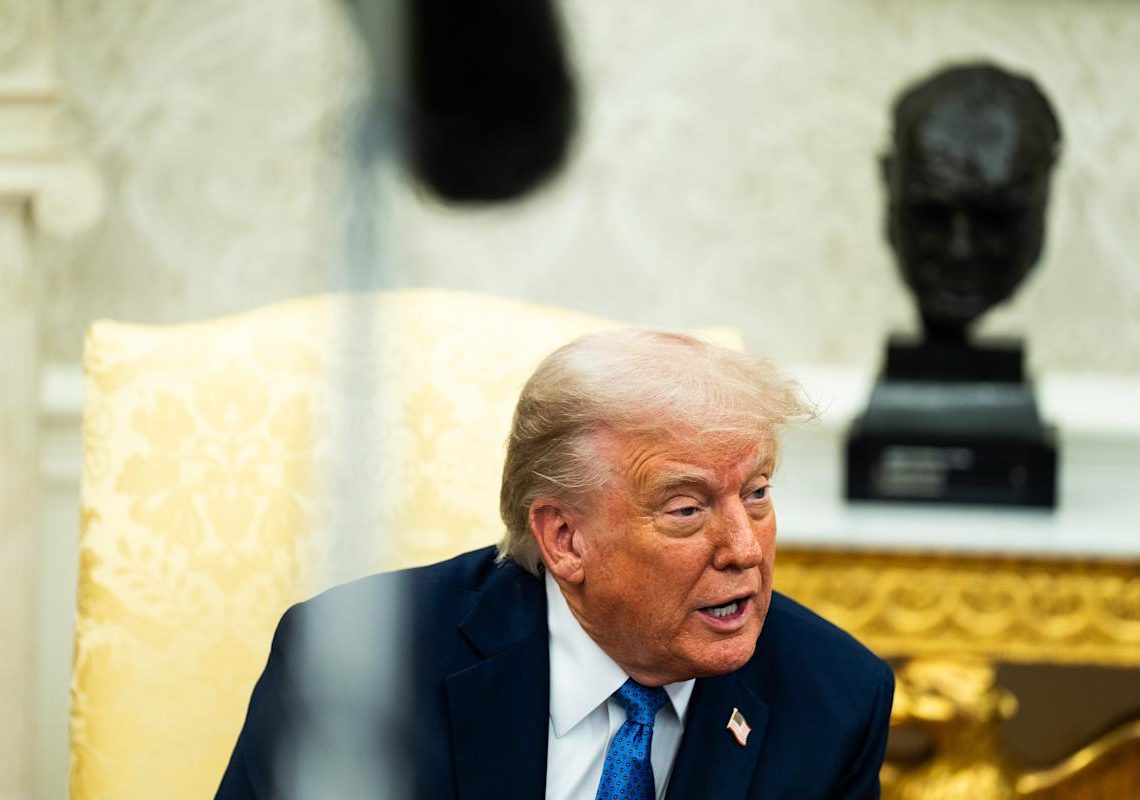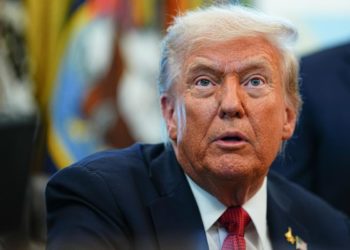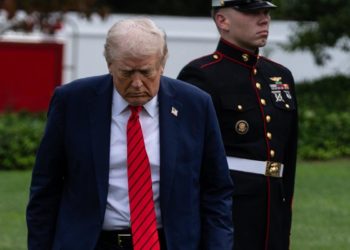For more than 70 years, presidents have tried to sway the Federal Reserve to keep interest rates low.
Only Richard M. Nixon succeeded, quietly pressuring the central bank for low rates, which helped fuel a decade of inflation. Others, from Harry S. Truman to George H.W. Bush, saw their public pressure backfire or simply fail to land.
Donald Trump is no Nixon.
For Fed watchers, that message seemed to hit home last week, when Trump abruptly backed off his sharp attacks on Fed Chair Jerome H. Powell, after his social media posts suggesting he could dismiss the central bank chief rattled the stock market. A senior White House official, Kevin Hassett, also had amplified the president’s displeasure with the Fed leader, telling reporters that Trump was studying whether he could fire the Fed chief.
Like most before him, Trump may have belatedly discovered that criticizing the Fed in public doesn’t typically work. The central bank will not change course because of it, but financial markets might react negatively – causing long-term interest rates to climb.
“Fed bashing is a fool’s game,” said Lawrence H. Summers, who was treasury secretary during the Clinton administration, which instituted a policy of not publicly critiquing monetary policy.
Trump’s trade policies had already roiled markets when his attacks on the Fed, including calling Powell a “major loser” whose “termination cannot come fast enough,” fueled new declines in stock prices, a weaker dollar and a spike in government borrowing costs.
After days of criticism, the president reversed course. He told reporters on Tuesday that he “has no intention” to fire Powell and that the “press runs away with things.” His about-face came amid clear signs that Wall Street was unnerved by the prospect of renewed political interference at the Fed, which could erode the central bank’s ability to tackle inflation.
It was always unlikely that Trump would strategically outmaneuver the Federal Reserve, said Peter Conti-Brown, a Fed historian at the University of Pennsylvania. Yet it’s an open question whether the president, “through bombast and sheer cult of personality,” will replace Powell with someone who is appropriate for the role, Conti-Brown said. Powell’s term as chairman expires in May 2026.
“That’s the biggest flashing red light,” the historian said. “Who will be Jay Powell’s successor, and will that person be a competent central banker in a Republican mold, or will he be a Trump loyalist?”
Congress structured the Fed to be insulated from short-term political pressure. That’s because presidents and other elected officials often prefer lower interest rates to spur immediate growth, even if it risks higher inflation down the line, which could ultimately harm the broader economy.
During his first term, Trump repeatedly criticized Powell – whom he originally appointed as chair – berating him on social media and imploring the Fed to lower rates. By late 2018, Trump started asking advisers whether he could fire Powell after markets dipped on fears of the president’s escalating trade war with China. His advisers told him he lacked the authority.
Publicly, Powell did not respond to the attacks, and while the Fed ultimately cut interest rates in 2019, those moves were unrelated to Trump’s browbeating. Instead, officials tied the cuts to a potential slowdown caused by the U.S.-China trade war. In some ways, it was an easier call because inflation wasn’t a concern at the time, unlike the present circumstances.
The Fed’s insulation from political pressure, while long codified in the law, wasn’t really formalized in practice until after World War II, during a clash with President Harry S. Truman. At the time, the central bank was holding interest rates down to help the Treasury finance government borrowing. But by early 1951, inflation was running above 21 percent and the Fed feared it would rise further during the Korean War.
The dispute escalated into a standoff, in which the Fed’s entire policymaking committee was summoned to the White House for a tense meeting. Weeks later, the standoff ended with the Treasury-Fed Accord, a landmark agreement that affirmed the Fed’s ability to set interest rates without political interference. The agreement established the norm of allowing the Fed to exercise the independence that Congress had already provided it, said Kathryn Judge, a law professor at Columbia University and a legal scholar of the Federal Reserve.
Roughly two decades later, Nixon adopted a different playbook – one that paid off politically in the short run but contributed to lasting economic damage. Ahead of his 1972 reelection campaign, Nixon privately leaned on Fed Chair Arthur Burns, a longtime personal friend, to keep interest rates low.
Burns acquiesced, and Nixon won reelection in a landslide. But the Fed’s weak response to inflation helped fuel the runaway price increases of the 1970s, ultimately requiring painful interest rate hikes to bring prices back under control.
The episode remains a cautionary tale, with Burns’s tenure widely regarded as a failure, in large part owing to his acquiescence to Nixon, according to Conti-Brown’s book “The Power and Independence of the Federal Reserve.”
Even Ronald Reagan – often remembered as a model of restraint – had public skirmishes with the Fed. Early in his presidency, Reagan requested a meeting at the Fed’s headquarters, but Chair Paul A. Volcker refused, insisting the gathering take place at the Treasury to avoid any appearance of political influence. Like his predecessors, Reagan worried that high interest rates posed an electoral threat, and he wasn’t shy about expressing concern.
George H.W. Bush also called for lower rates as the economy struggled to rebound from a recession. But his appeals largely fell flat with Fed Chair Alan Greenspan, and Bush later said the Fed’s tight policy slowed the recovery and cost him his reelection.
Related Content
You can read with a cat on your lap at this bookstore, then adopt the cat
What does it take to beat an evil empire? ‘Andor’ knows.
The Abrego García case: A timeline and assessment of key documents
The post Presidents have long criticized the Fed. It usually backfires. appeared first on Washington Post.




